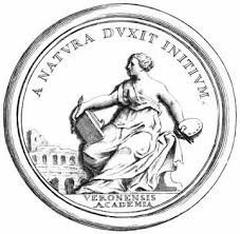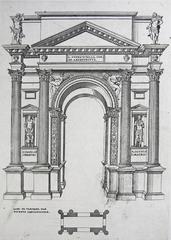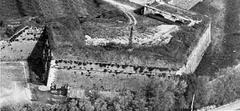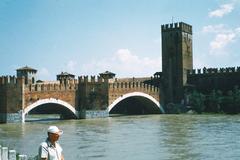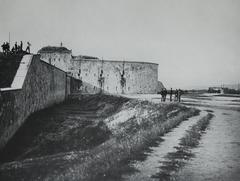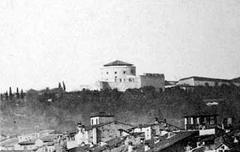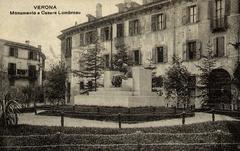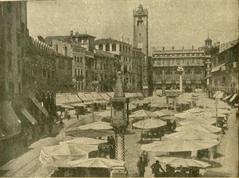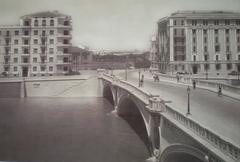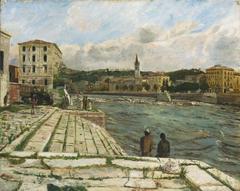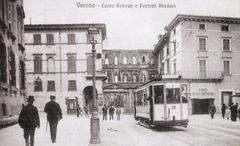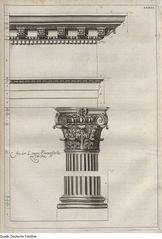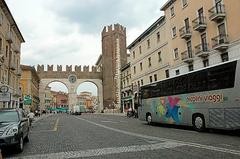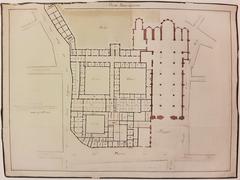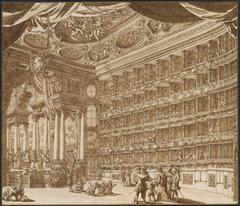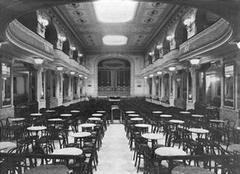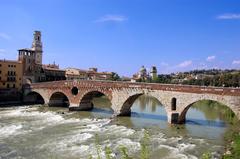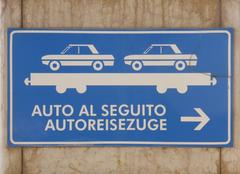Chiostro Dei Gesuati Verona: Visiting Hours, Tickets, and Historical Sites Guide
Date: 14/06/2025
Introduction
Nestled on the picturesque slopes of Colle San Pietro, the Chiostro dei Gesuati in Verona stands as a remarkable fusion of religious devotion, Renaissance artistry, and archaeological heritage. Originally established in the 14th century by the Gesuati order, this cloister has evolved over centuries into one of Verona’s most captivating historical sites. Today, it offers visitors a unique journey through time, blending elegant architecture, Roman relics, and panoramic city views. Whether you are a history enthusiast, an art lover, or a curious traveler, the Chiostro dei Gesuati is a must-visit destination that reveals the depths of Verona’s layered cultural landscape (Wikipedia: Gesuati; Veronasera; Archeologia Voci dal Passato).
This comprehensive guide covers the cloister’s history, architectural highlights, visitor information, accessibility, nearby attractions, and practical tips to help you make the most of your visit. For the latest updates and ticket purchases, consult the Verona Museums website or the Museo Archeologico al Teatro Romano page.
Table of Contents
- Introduction
- Historical Overview: The Gesuati Order and the Cloister
- Architectural and Artistic Highlights
- Visitor Information (Hours, Tickets, Accessibility)
- Cultural and Educational Significance
- Nearby Attractions
- Tips for a Memorable Visit
- Frequently Asked Questions (FAQ)
- Conclusion
- Sources and Further Reading
Historical Overview: The Gesuati Order and the Cloister
Origins and Evolution
The Gesuati, a religious order founded in Siena around 1360 by Giovanni Colombini, embraced a life of penitence, charity, and artisanal crafts. Originally a lay fraternity, the Gesuati became known for their devotion and manual labor, producing items such as clock mechanisms, stained glass, and herbal remedies. The order was officially recognized by the papacy over several decades and eventually classified among the mendicant orders by Pope Pius V in 1567 (Wikipedia: Gesuati).
Establishment in Verona
The Verona convent, established in the 15th century, occupies a strategic location overlooking the Roman Theatre and the Adige River. The cloister’s Renaissance architecture harmoniously incorporates Roman archaeological remnants, exemplifying the site’s enduring historical significance (Veronasera).
Suppression and Transformation
After reaching its zenith in the 15th century, the Gesuati order declined and was eventually suppressed in 1668. Their Verona convent was repurposed over time, and today it forms the heart of the Museo Archeologico al Teatro Romano, preserving and showcasing centuries of religious and civic history.
Architectural and Artistic Highlights
The Cloister
The cloister features arcaded walkways, stone columns, and a central garden, creating a peaceful haven for contemplation. Its Renaissance loggias and cross vaults reflect the ideals of symmetry and proportion that flourished under Venetian rule (World History Journal).
The Church of San Girolamo
Adjoining the cloister, the Church of San Girolamo (ca. 1430) is adorned with 16th-century frescoes and a 1508 triptych by Giovanni Francesco Caroto, a masterpiece of Veronese Renaissance painting (Archeologia Voci dal Passato).
Museum Exhibits
Housed in the former monastic cells are collections of Roman glassware, bronze figurines of deities, and artifacts related to domestic worship. Funerary inscriptions and steles from local lapidary workshops, Etruscan urns, and Roman bronzes are also displayed, illustrating Verona’s ancient past (Museionline).
The Grande Terrazza
The Grande Terrazza, reopened in 2002, offers breathtaking panoramic views of Verona and the Roman Theatre below. Here, visitors can admire open-air displays of funerary slabs and architectural fragments (Archeologia Voci dal Passato).
Visitor Information
Visiting Hours
- Tuesday to Sunday: 10:00 AM – 6:00 PM (Check the official site for seasonal variations)
- Closed: Mondays and major public holidays
Tickets
- General admission: €8
- Reduced (students, seniors): €5
- Free: Children under 12, Verona residents
- Combined tickets: Available with the Roman Theatre Museum
Tickets can be purchased online through the official Museo Archeologico al Teatro Romano website or at the entrance.
Accessibility
The site is wheelchair accessible, with ramps and elevators installed throughout most areas. Some historic sections may have restricted access due to uneven surfaces. Assistance is available upon request—contact the museum ahead for specific needs.
Facilities
Restrooms are available on site. While there is no café within the complex, numerous dining options are nearby, especially along the Adige river and in the city center.
Getting There
Located near the historic center, the cloister is easily accessible by foot, public transport, or car (limited parking nearby). The entrance is shared with the Roman Theatre, just a short walk from Ponte Pietra.
Cultural and Educational Significance
Since its transformation into a museum in 1924, the Chiostro dei Gesuati has served as a hub for archaeological education, hosting workshops, guided tours, and cultural events. Renovations have enhanced accessibility and visitor experience, ensuring the cloister remains a vibrant part of Verona’s community and cultural fabric (Museo Archeologico al Teatro Romano, Wikipedia).
The site regularly hosts:
- Art exhibitions and concerts
- Lectures and workshops on restoration, art, and history
- Religious and community events, especially during major liturgical seasons
Nearby Attractions
Enhance your visit by exploring other notable sites within walking distance:
- Roman Theatre: Adjacent to the cloister, this ancient amphitheater hosts performances and offers a glimpse into Verona’s Roman history.
- Arena di Verona: Iconic Roman amphitheater famous for its opera festival.
- Piazza delle Erbe: Vibrant marketplace surrounded by historic architecture.
- Basilica di San Zeno Maggiore: Masterpiece of Romanesque architecture.
- Ponte Pietra and Castel San Pietro: Scenic bridge and hilltop fortress with panoramic city views.
For more on Verona’s attractions, see the Visit Verona website.
Tips for a Memorable Visit
- Best times: Spring and autumn offer pleasant weather and fewer crowds.
- Photography: Non-flash photography is permitted; the Grande Terrazza is ideal for panoramic shots.
- Dress code: Modest attire and respectful behavior are expected due to the site’s religious origins.
- Accessibility: Contact ahead for special accommodations if needed.
- Combine sites: Use combined tickets for savings and a richer experience.
Frequently Asked Questions (FAQ)
Q: What are the opening hours?
A: Tuesday to Sunday, 10:00 AM – 6:00 PM. Closed Mondays and major holidays.
Q: How do I buy tickets?
A: Purchase online via the official website or in person.
Q: Are guided tours available?
A: Yes, in multiple languages; book in advance or inquire at the ticket desk.
Q: Is the site accessible?
A: Most areas are wheelchair accessible; contact the museum for details.
Q: Can I take photos?
A: Non-flash photography is allowed; check for restrictions in certain areas.
Conclusion
The Chiostro dei Gesuati is a distinctive Verona landmark that offers a compelling blend of Renaissance architecture, Roman artifacts, and tranquil garden spaces. Its quiet beauty, rich history, and panoramic views provide a serene escape and a deep connection to the city’s multifaceted heritage. Whether you visit for the art, the history, or the peaceful atmosphere, the Chiostro dei Gesuati is sure to enrich your Verona experience.
For the latest information, downloadable guides, and event updates, visit the Verona Museums website, follow official social media channels, and consider using the Audiala app for interactive tours.
